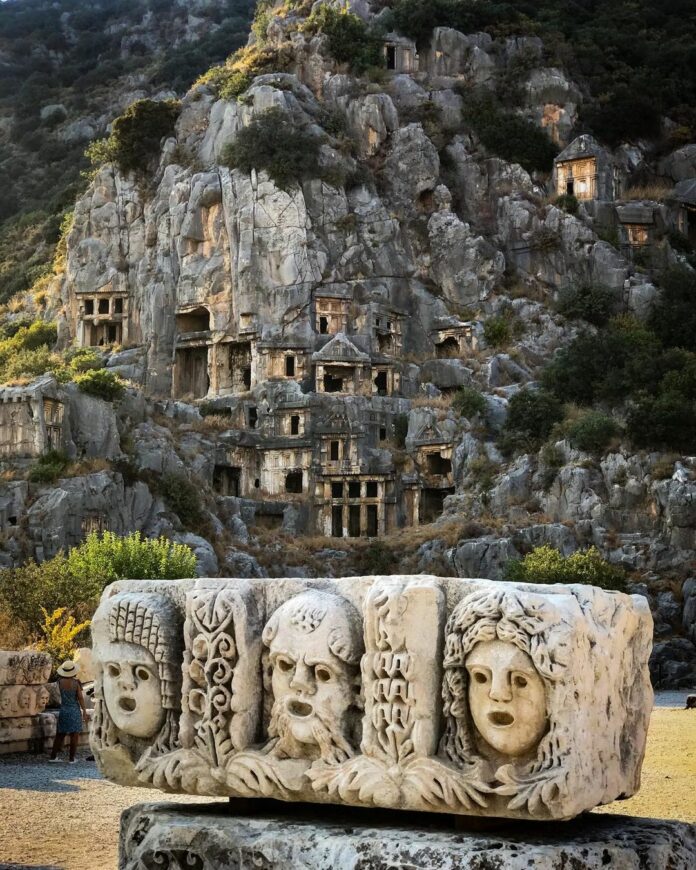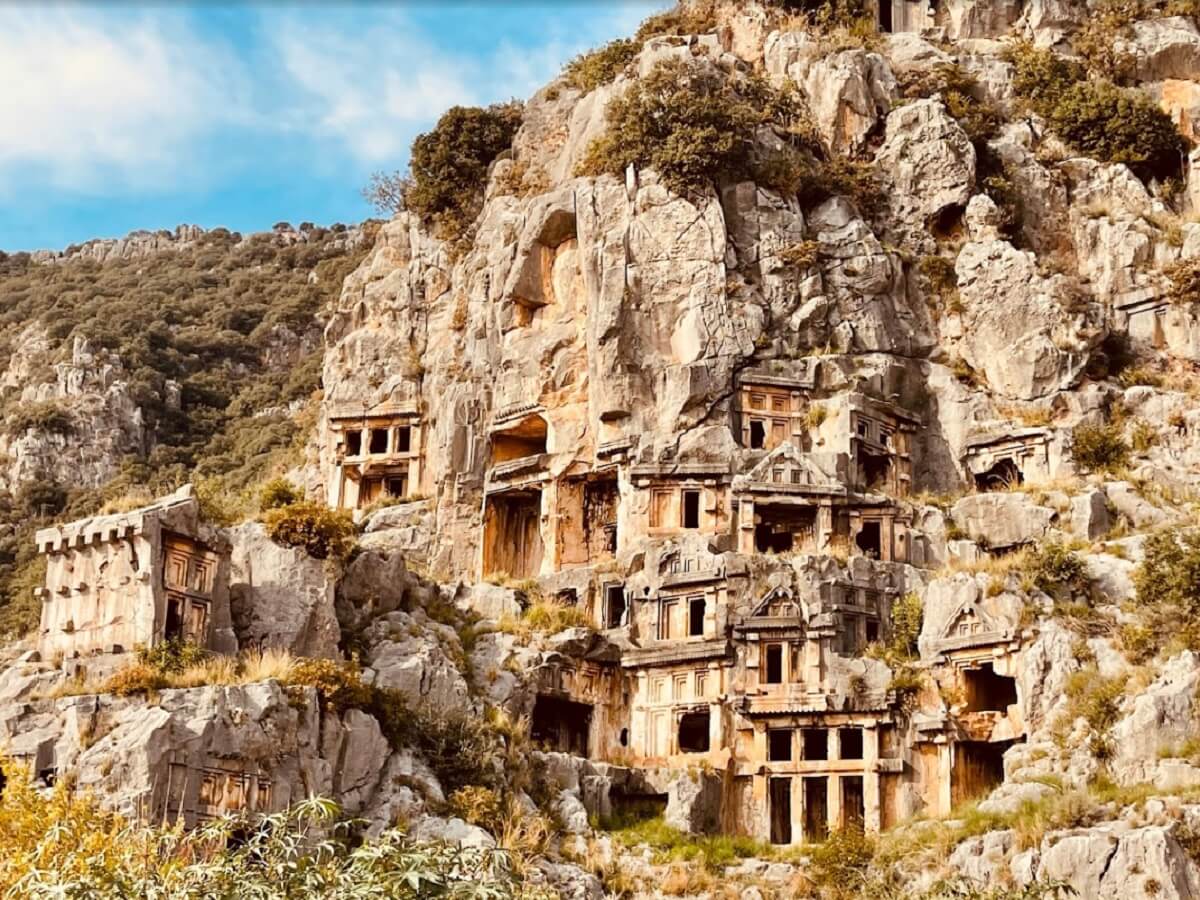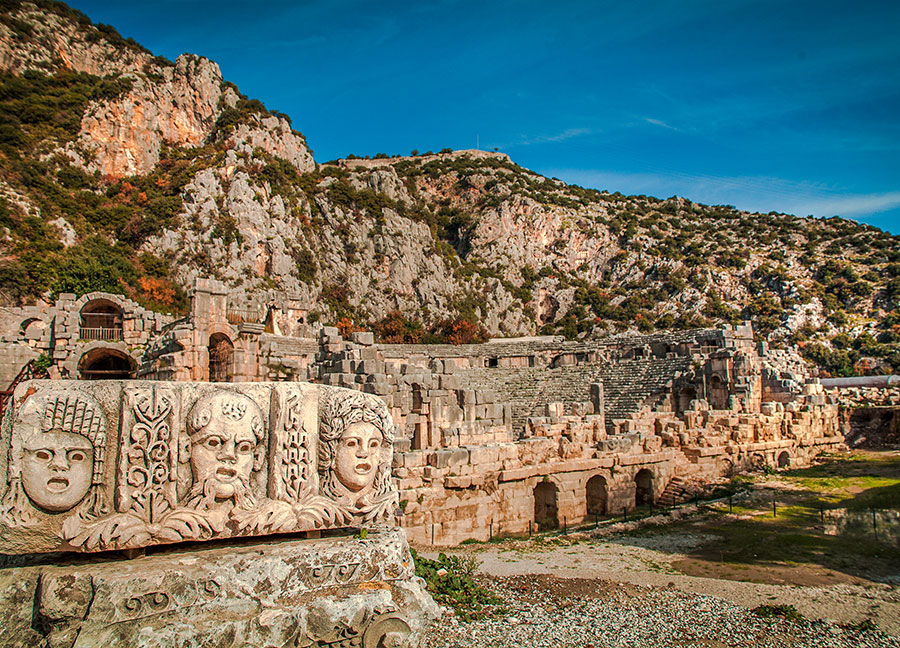Located in the heart of Antalya’s Demre District, the ancient city of Myra is a fascinating archaeological site steeped in a rich history that spans numerous centuries. Renowned for its impressive Lycian rock tombs, a well-preserved Roman theatre, and the Byzantine-era Church of St. Nicholas, Myra provides an exceptional insight into antiquity. This article examines the historical importance of Myra, tracing its evolution, notable architectural wonders, and its significant impact on both regional and religious history.
A City of Historical Importance
The ancient city of Myra, established on the plain that bears its name, was strategically linked to the sea via a canal west of the Myros River, present-day Demre Stream. This connection promoted maritime trade and transportation, with the port of Andriake (modern Çayağzı) serving as Myra’s main access point to the sea. Historical sources, including the works of geographer Strabo, identify Myra as one of the six principal cities of the Lycian League, referred to in Lycian inscriptions as “Myrrh.” Archaeological findings such as rock tombs, inscriptions, and coins indicate that Myra has been an important settlement since at least the 5th century BCE.

Architectural Wonders of Myra
Among Myra’s most remarkable attributes are its Lycian-era rock tombs, which illustrate the region’s distinctive architectural style. These intricately carved tombs, some featuring reliefs depicting the deceased alongside their families, are outstanding examples of Lycian artistry. Designed to resemble wooden houses, these tombs are situated on the southern slopes of the acropolis, offering stunning views for visitors.

Another significant structure in Myra is the Roman theatre located at the southern base of the acropolis. This well-preserved theatre, with its stone seating and standing stage structure, epitomizes the grandeur of Roman architecture. The theatre’s stage building has survived to the second floor, showcasing the engineering skills of ancient Romans.
Myra in the Byzantine Period
During the Byzantine era, Myra became an important administrative and religious hub. It was during this period that the city became renowned as the residence of St. Nicholas—better known as Santa Claus—who served as bishop of Myra in the 4th century CE. The legacy of St. Nicholas remains central to the city’s history, with a church erected in his honor following his canonization.
However, despite its significance, Myra began to decline in the 7th century due to a series of natural calamities, including earthquakes and floods, coupled with Arab invasions. By the 12th century, this formerly thriving metropolis had diminished to a small village.

Preservation of Myra’s Remnants
Today, the ruins of Myra stand as a testament to its illustrious past. Visitors can wander through remnants of Hellenistic and Roman walls on the acropolis hill and observe early Roman brickwork in what remains of the city’s baths. The advanced water supply system, featuring channels carved into rock alongside the Demre Stream, further highlights the engineering expertise of Myra’s inhabitants.
The ancient city also maintained a deep connection to its religious heritage, as evidenced by coins minted there that often depicted Artemis in her form as Cybele, one of Anatolia’s oldest goddesses. This link to ancient religious traditions emphasizes Myra’s significance within the Lycian League, where it held considerable influence as one of six cities possessing three votes.

Conclusion
The ancient city of Myra, with its rich historical narrative and architectural grandeur, continues to captivate historians and archaeologists alike. From its rise as a powerful Lycian city to its prominence during the Byzantine period, Myra’s lasting significance is evident in the ruins that remain today. As the former home of St. Nicholas and a center for ancient engineering and religious practices, Myra offers a unique glimpse into history, inviting visitors to discover its timeless beauty and enduring legacy.

